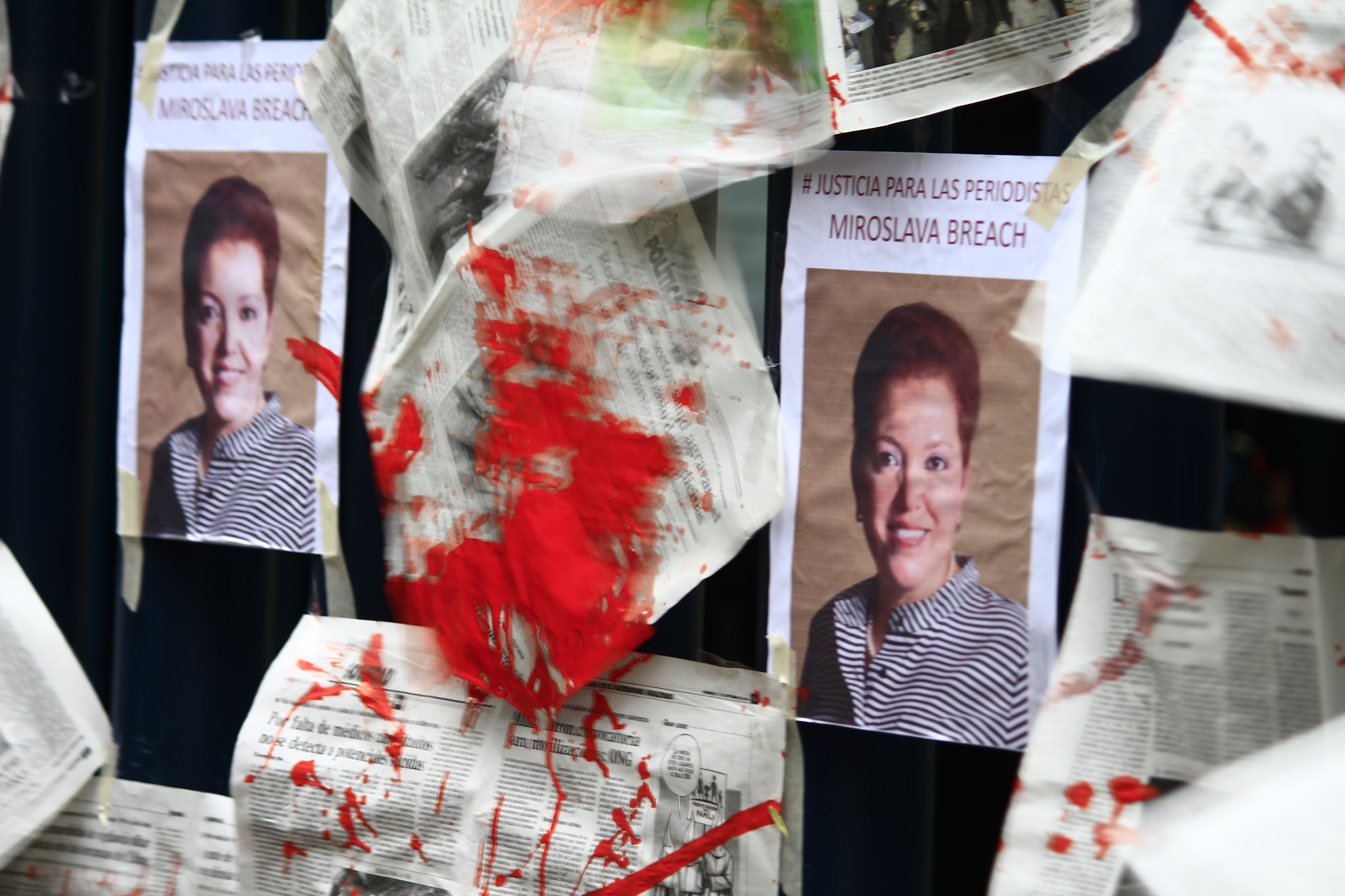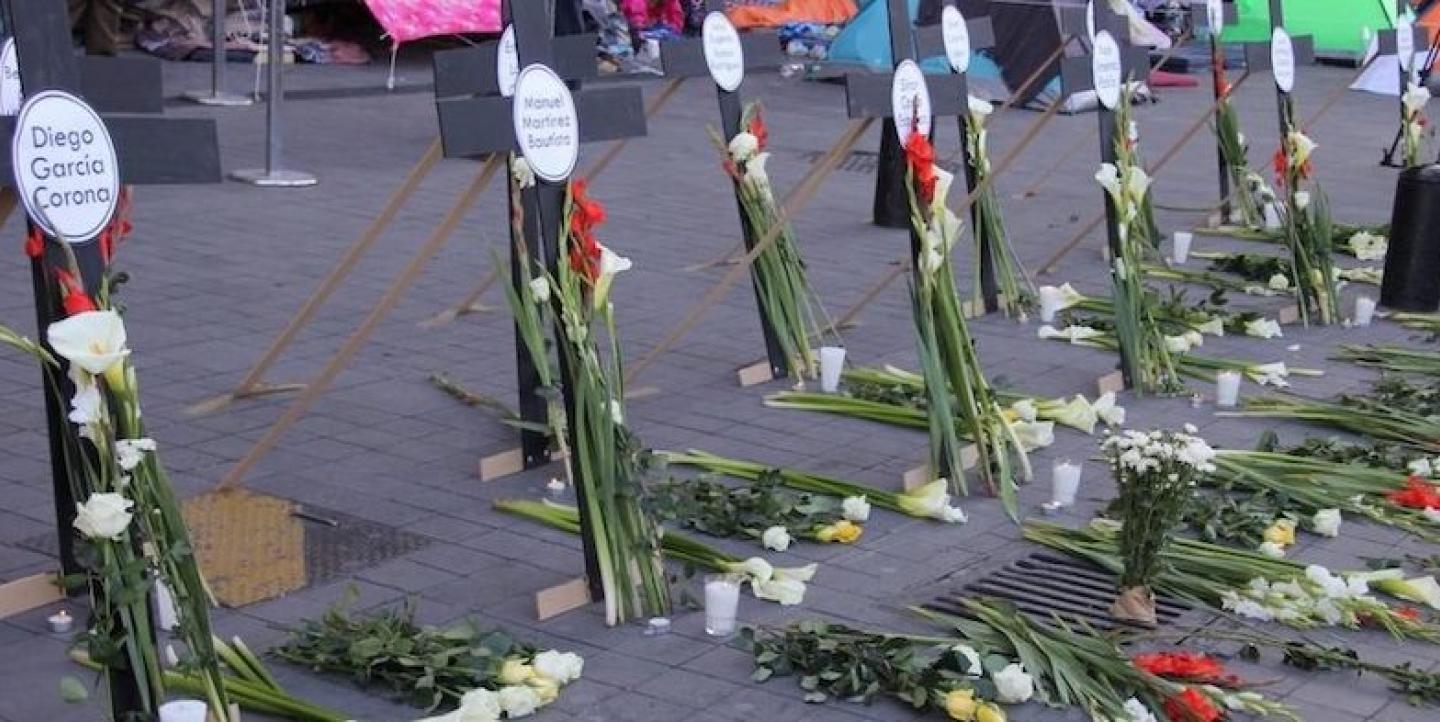Five journalists were murdered in Mexico during the first five months of 2019 — a tragic and, sadly, unsurprising number in one of the deadliest countries in the world to practice journalism. The power of the drug cartels, state and police corruption, and an inefficient justice system all contribute to a lethal combination that has turned Mexico into a land of impunity for those who seek to silence critical voices.
In order to address this desperate situation, which also takes a high toll among human rights activists, the government of then-President Felipe Calderón established the Mechanism to Protect Human Rights Defenders and Journalists in 2012. The initiative aims to guarantee "the life, integrity, freedom and security of those who are at risk as a result of the defense or promotion of human rights, and the exercise of freedom of expression and journalism." The Mechanism offers activists, journalists, media and NGOs under threat immediate protection measures, such as escorts or bodyguards, security cameras and equipment, including bulletproof vests and satellite phones.
Seven years after the creation of the program, Peace Brigades International (PBI) and the Washington Office for Latin American Affairs (WOLA) published the report, "Turning the Tide of Impunity. Protection and Access to Justice for Human Rights Defenders and Journalists in Mexico." This report analyzes the Mechanism's work since its establishment until 2018, a period that coincides with the full term in office of former President Enrique Peña Nieto, whose administration "was marred by a marked increase in hostility towards critical and dissident voices and a demonstrated failure to protect their spaces of action,” according to the study.
To gather data that provides an accurate picture of the results of the Mechanism's implementation so far, interviews were conducted with victims, Mexican authorities, national and international human rights organizations and members of Espacio OSC, a group of organizations representing victims and presenting cases before the Mechanism. In addition, more than 40 access-to-information requests were submitted to the Attorney General's Office, and to prosecutors' offices in the ten Mexican states where the program has accepted the largest number of applications.
It wasn't easy for authors Gina Hinojosa, Virry Schaafsma and Maureen Meyer to access the requested data.
"Few prosecutors' offices gave us all the information we asked for within the period of time stipulated in Mexican transparency laws," Gina Hinojosa, WOLA’s Program Associate, told IJNet.
"We had to send several requests and make several calls to receive the data," she added. "In the case of Coahuila, the state prosecutor's office did not provide us with a complete response in the seven months between the presentation of our first application and the report’s release. That's why the document does not include data from Coahuila."
The authors also found that the statistics from several prosecutors’ offices did not present a disaggregated record of crimes against journalists and human rights defenders, thus preventing the identification of patterns and possible connections between cases. "We see this as a serious disregard for the high levels of violence faced by human rights defenders in Mexico and a disinterest on the part of the Mexican government to understand the risks they deal with," Hinojosa said.
The creation and permanence of the Mechanism is good news in and of itself. As of January, 2019, the program had accepted 644 of the 766 requests for protection it received, with a total of 1,144 people receiving some form of protection since 2012. The overall picture is, however, bleak: since August 2017, six beneficiaries of the program have been murdered, and the new administration of president Andrés Manuel López Obrador has cut the Mechanism's already limited budget, in turn hindering its capacity.

Additional findings of the report include:
- The protection measures offered by the Mechanism are usually insufficient. There are no risk analysis protocols that identify the different needs of journalists when granting protection measures. These measures are often unreliable, not adequately implemented, and they do not take into account realities on the ground in different regions of the country.
- The Mechanism suffers from a serious lack of adequate staffing and budget levels. There are only 35 Mechanism personnel overseeing the protection of 831 journalists and human rights defenders. Despite this context, Mexico's 2019 budget cut funds to the Ministry of the Interior’s Human Rights Unit —which finances the Mechanism's staff salaries— by more than US$610,500, meaning additional staff will likely not be hired in 2019.
- The Mexican government’s failure to properly investigate and sanction crimes against journalists and human rights defenders has left these groups open to attack. Between 2012 and June, 2018, just three percent of investigations opened by the state prosecutor’s offices analyzed by WOLA and PBI made it to the courts.
- Some law enforcement institutions often devote time and resources toward discrediting and criminalizing the work of journalists. The report reveals that in the state of Chihuahua, for example, the number of cases in which authorities deemed journalists to be the alleged aggressors was more than double the number of cases opened into crimes committed against them.
The report makes several recommendations to the Mexican government, among them to ensure that the Mechanism has the necessary human and financial resources to adequately perform its functions. Special emphasis is also given to the investigative work of prosecutors and personnel within prosecutor’s offices across the country, proposing they receive specialized training on how to analyze crimes within the context of victims’ journalism or advocacy activities. They should, furthermore, be familiar with the recently-passed Standardized Protocol for the Investigation of Crimes against Freedom of Expression.
"We believe prosecutors should have systematized records that track the frequency and types of crimes suffered by human rights defenders and reporters so that they can determine possible patterns and modus operandi," said Hinojosa. "This information would not only help in the investigations, but could be shared with the Mechanism so that its officials understand the specific risks faced by activists and journalists in different areas of the country, and thus develop better prevention strategies."
Read the full report here. A summary is available here.
Main image: Propuesta cívica.
Secondary image CC-licensed by Flickr, via Adrián Martínez.


